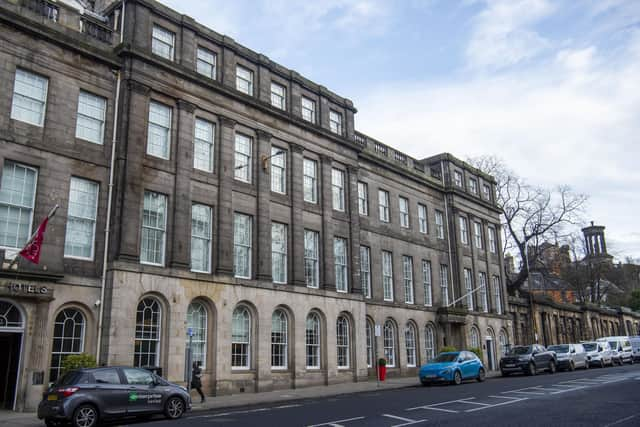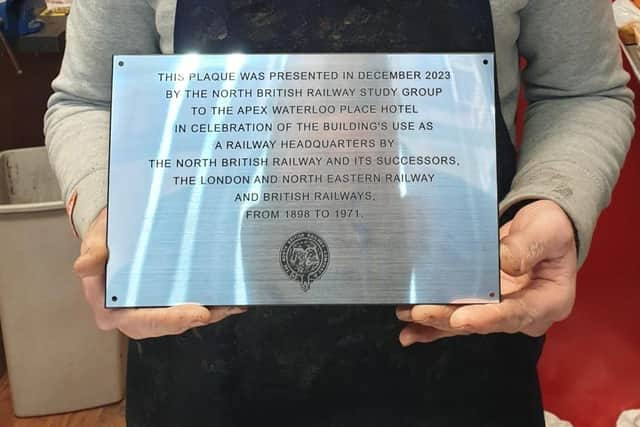Edinburgh Apex Hotel’s forgotten history as railway nerve centre commemorated
A forgotten chapter in the history of Edinburgh's first major purpose-built hotel when it became the nerve centre of the capital's railways has been commemorated.
Opened as the Waterloo Hotel in 1819 on a newly-built entry road to the city centre just east of Princes Street, the imposing building is far less well known as the past headquarters of several railway companies, chosen because of its proximity to Waverley Station.
Advertisement
Hide AdAdvertisement
Hide AdThe site's past fame has rested on links to Charles Dickens, who is believed to have worked on two novels while a hotel guest in 1861, and Trainspotting author Irvine Welsh, who worked in the city council’s housing department when it was based there in the 1980s.


But now rail heritage lovers have highlighted the Waterloo Place building’s key role in the development of Scotland’s railways with a plaque to mark its 73-year reign as the head office of the North British Railway (NBR) and then Scottish headquarters of the London and North Eastern Railway (L&NER) which succeeded it.
The NBR Study Group, which commissioned the commemorative sign, said up to 400 staff worked in the complex, which continued to be used by British Rail after nationalisation until 1969 when its management was rationalised and operations were moved to Glasgow.
The building was converted back to its original use with a £30 million refurbishment by Apex Hotels and reopened in 2009.
Andrew Boyd, of the NBR Study Group, said the railway offices were originally due to have been housed within the North British Hotel – now the Balmoral – beside Waverley Station, but it was decided to use the whole building for guests to maximise revenue.


However, he said the Waterloo Place building had proved almost as convenient since the station was just 100m away from its basement via Calton Road.
The North British Railway took over the hotel when it closed in 1898, followed by the LN&ER when the railway companies were amalgamated into the “Big Four” in 1923, and then by British Rail Scottish Region from 1948.
Mr Boyd said: “It was the top management of the railway that was here – the top tier of the railway operation.”
Advertisement
Hide AdAdvertisement
Hide AdA former campaigner against closure of the Waverley route between Edinburgh and Carlisle, he recalled visiting the offices to travel on a goods train on the line after passenger services were withdrawn in 1969. Back then, passengers were permitted to travel in the brake vans in return for buying a first class ticket.
Don Martin, editor of Scottish Local History magazine, said the building also provided public access for the first time to archives from all the Scottish railway companies from 1958, whose value was reflected in being secured by a bank vault-style heavy metal door. They are now held in the National Records of Scotland in Princes Street.
Mr Martin said they had been an invaluable resource for his research over more than 60 years. He said: “They were very useful in examining the establishment of Lenzie and the building of commuter houses, sold with free travel on the new Edinburgh and Glasgow line. It has parallels with the development of commuting in London – a bit like Scotland’s Metroland.”
Comments
Want to join the conversation? Please or to comment on this article.